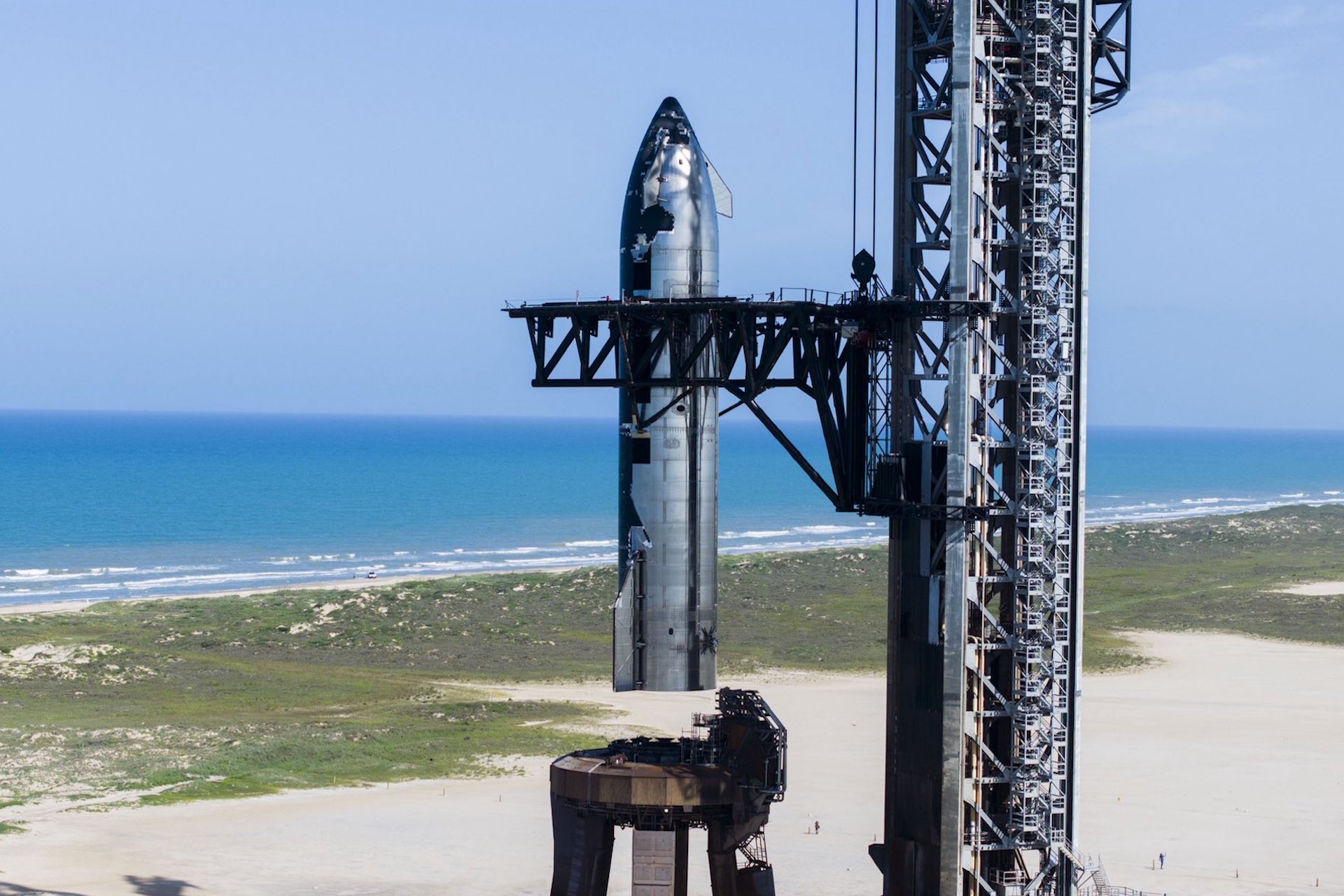UPDATE: SpaceX is preparing for the crucial tenth test flight of its Starship rocket, set to launch on Sunday, August 24, 2025, at 7:30 p.m. ET. This flight comes after a series of failures that have raised significant doubts about Starship’s capability to achieve its goal of flying to Mars by 2026.
This test is critical for SpaceX as it seeks to recover from previous setbacks, including the rocket’s last flight on May 27, which ended in disaster when the vehicle broke apart during reentry. The stakes are high, as this flight will attempt to fulfill mission objectives that have repeatedly gone unachieved due to various anomalies.
SpaceX has integrated several hardware and operational changes into Starship for this flight, aiming for increased reliability. The launch will be broadcast live on SpaceX’s website and its X account, allowing fans and followers to witness the action as it unfolds.
The upcoming mission will focus on a payload deployment test, marking the fourth consecutive attempt to successfully deploy payloads. This time, the rocket will deploy 10 Starlink simulators, each mimicking the size and weight of next-generation satellites. Unlike previous missions, these simulators will not remain in orbit but are designed to follow a suborbital trajectory and burn up upon reentry.
For the Super Heavy booster, SpaceX is changing strategy. Instead of attempting to catch the booster at the launch mount, it will now target an offshore landing point in the Gulf of Mexico. This test will assess the booster’s landing capabilities, including a crucial engine shutdown designed to test the backup engine’s reliability.
In a significant modification, SpaceX has removed several tiles from Starship’s heat shield to stress-test vulnerable areas during reentry. These adjustments come after the rocket experienced severe issues during its sixth flight test. The Federal Aviation Administration (FAA) has cleared the way for this upcoming flight, having concluded an investigation into the previous flight’s mishap, which was traced to structural issues that caused a catastrophic ignition.
To mitigate risks, SpaceX has lowered the booster’s descent angle to reduce aerodynamic forces, a critical change aimed at preventing another failure. Additionally, the company has addressed the explosion at its Massey facility, which destroyed the Starship prototype meant for this flight. The investigation revealed damage to a composite overwrapped pressure vessel (COPV), leading to new operational protocols that include lower pressure operations and rigorous inspections before loading reactive propellants.
Starship’s performance has been troubled throughout the year, with failures in its seventh and eighth test flights, where both resulted in explosions shortly after launch. The latest test in May also ended in failure, despite achieving planned velocity, as a propellant leak caused a loss of control resulting in a dramatic breakup during reentry.
With Flight 10 on the horizon, SpaceX is making every effort to break its streak of unsuccessful launches. The company’s future goals hinge on this mission’s success, and the world will be watching closely as Starship takes to the skies once again.
Stay tuned for live updates and coverage as SpaceX attempts to turn the tide with this pivotal flight.





































































